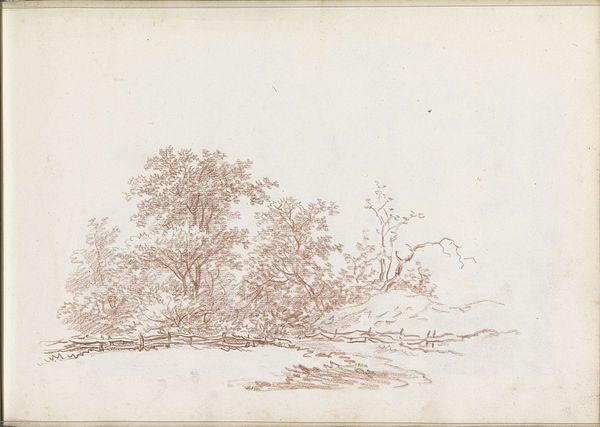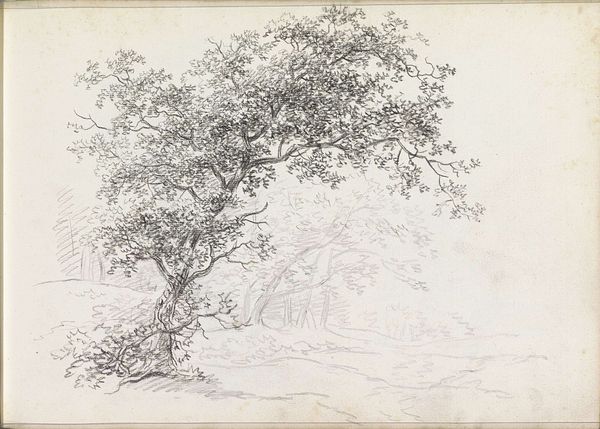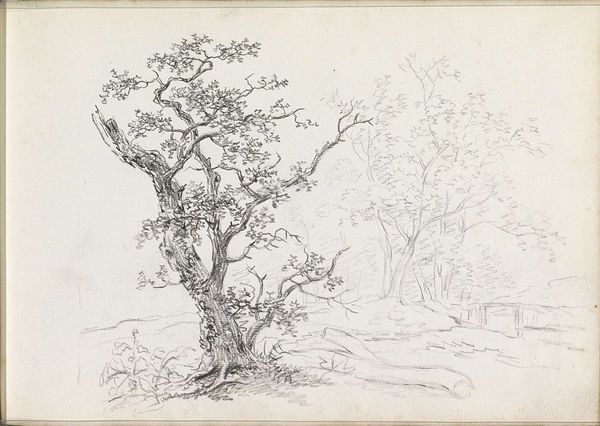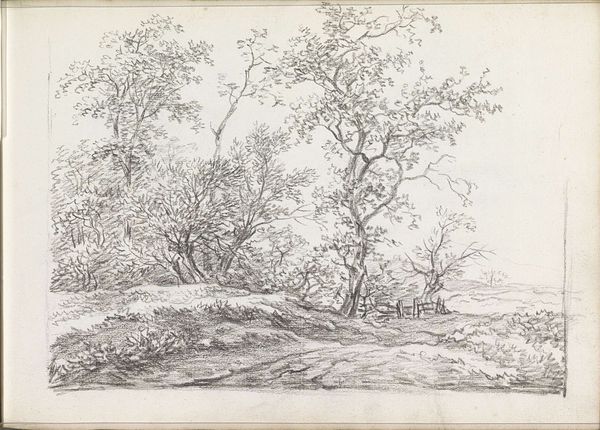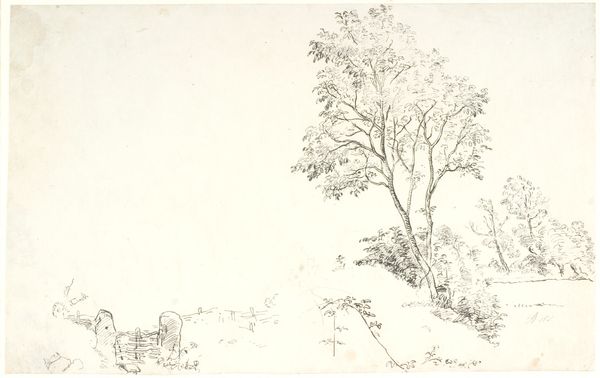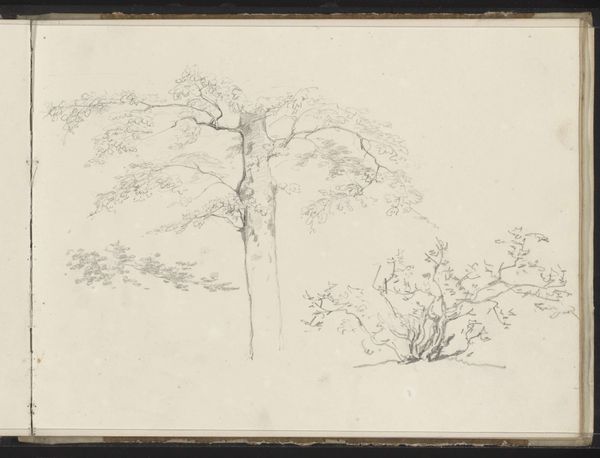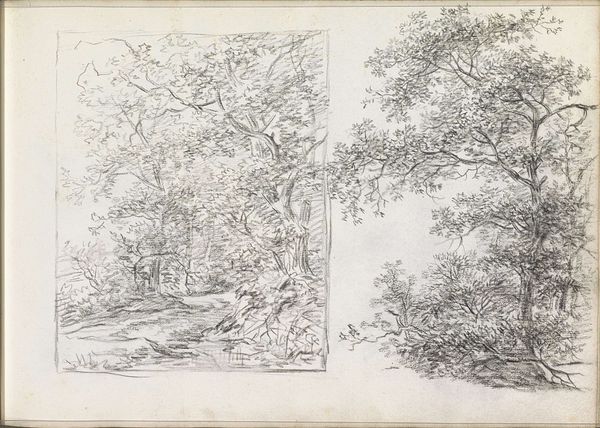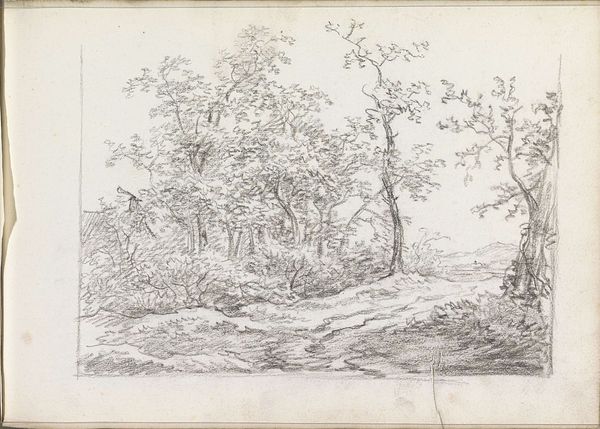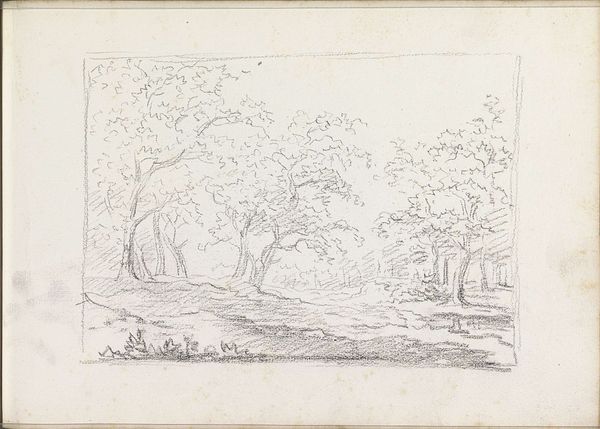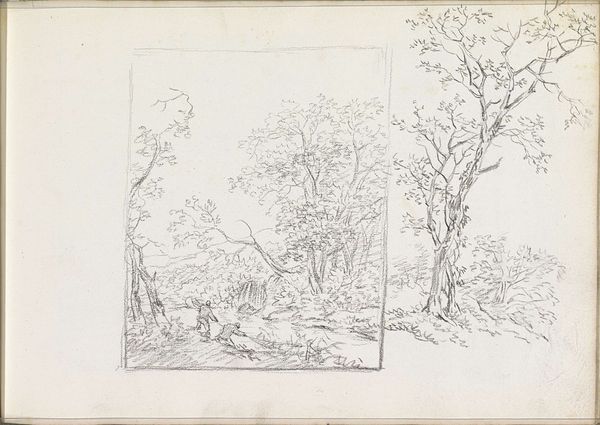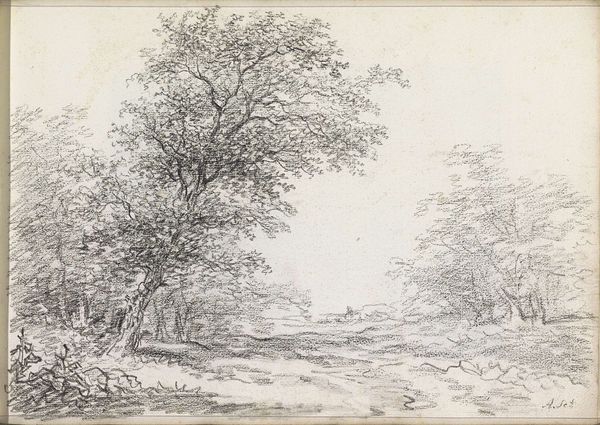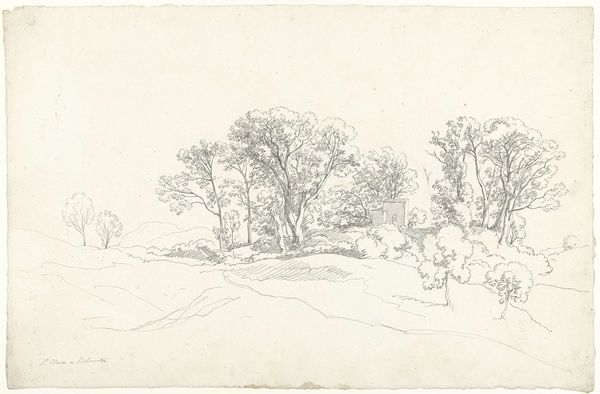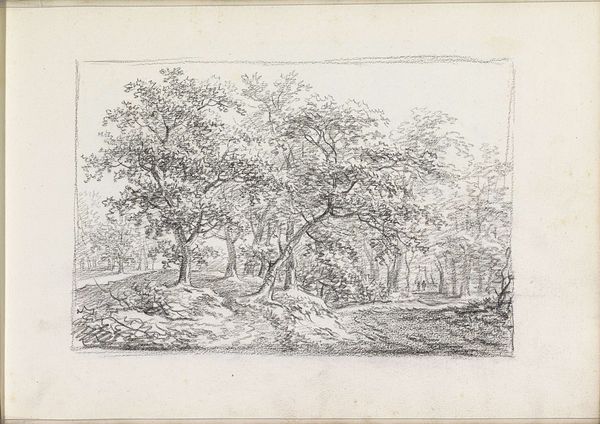
Landschap, tak met bladeren en een boom aan een waterkant c. 1811
0:00
0:00
andreasschelfhout
Rijksmuseum
#
light pencil work
#
ink drawing
#
pen sketch
#
pencil sketch
#
personal sketchbook
#
ink drawing experimentation
#
pen-ink sketch
#
pen work
#
sketchbook drawing
#
sketchbook art
Copyright: Rijks Museum: Open Domain
Curator: Here we have a landscape drawing, entitled "Landschap, tak met bladeren en een boom aan een waterkant" – which translates to Landscape, branch with leaves and a tree on a waterfront – created around 1811 by Andreas Schelfhout. Editor: There's a quiet energy to it, isn't there? It's like a whispered secret captured in pencil. The trees on the left side are quite faded while those at the right side are so crisp that the work looks unbalanced. The use of layering and shading creates depth, despite the rather rudimentary strokes. Curator: Schelfhout was working in the Romantic tradition, focusing on the Dutch landscape as a source of national pride and identity. Consider that artistic shift amid early 19th-century Holland. Editor: Ah, that makes perfect sense. Seeing the landscape not merely as topography, but as something deeply intertwined with cultural meaning and psychological well-being. Trees frequently symbolize growth, connection to ancestors, and stability. Note how the branches, heavy with leaves, suggest both shelter and a link to the past, an assertion of Dutch persistence maybe? Curator: He would likely have completed this "Landschap…" sketch in preparation for a more complex, saleable oil painting of the Dutch landscape. The political landscape of the Netherlands during this period—from French annexation to eventual independence—influenced the subject choices of art. Schelfhout’s work appealed to bourgeois sentiments celebrating nature's and Holland's virtues, and in his successful marketing of this trope helped to cement it within the national art culture. Editor: It's almost photographic in its desire to freeze a moment. One has to ask why that became such an important project for 19th century artists and their audiences. I appreciate knowing more about the landscape he grew up in and his motivations as an artist, not to mention the economic conditions that incentivized landscape subjects like this! Curator: Well, by examining how this drawing fits within its historical context, we gain insight into the evolving role of the artist within society. The symbols here offer an understanding of the importance attached to Holland's unique topography and character. Editor: Right. By digging into how images carry emotional weight, we reveal not only cultural memory but continuity. I will be pondering Holland’s cultural persistence a bit longer, thank you.
Comments
No comments
Be the first to comment and join the conversation on the ultimate creative platform.
